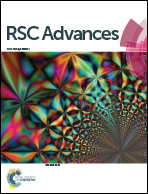Prediction of gas transport across amine mixed matrix membranes with ideal morphologies based on the Maxwell model
Abstract
The incorporation of highly selective molecular sieve such as carbon molecular sieve (CMS) and highly affinitive solvent such as diethanolamine (DEA) into polyethersulfone (PES) have been implemented to synthesize amine mixed matrix membranes (MMMs) with an enhanced gas performance. Synergetic effect of CMS and DEA has caused the improvement of carbon dioxide (CO2) permeability and ideal CO2/CH4 selectivity. While existing theoretical models define the relative permeability well for binary mixed matrix membranes they fail to predict the relative permeability of amine mixed matrix membranes. In fact, the degree of deviation from the simple model predictions provides understanding into the detailed properties of the third component, which has been neglected in previous analyses of these models. Modification of an existing model, namely the Maxwell model, provides an outline to analyze the gas permeation properties of model systems with CMS and DEA in glassy polymer phase. The new model is developed by modifying the basic Maxwell MMMs model. The modification also includes the optimization of λdm, which is defined as the ratio of dispersed phase permeability to matrix permeability, and the determination of permeability of the dispersed phase. Furthermore, this Maxwell model has been extended to model the performance of amine mixed matrix membranes by incorporation of combined volume fraction of filler and amine φ*ad. The proposed approach can predict the permeability of CO2 through amine MMMs and also lowers the AARE % value.


 Please wait while we load your content...
Please wait while we load your content...